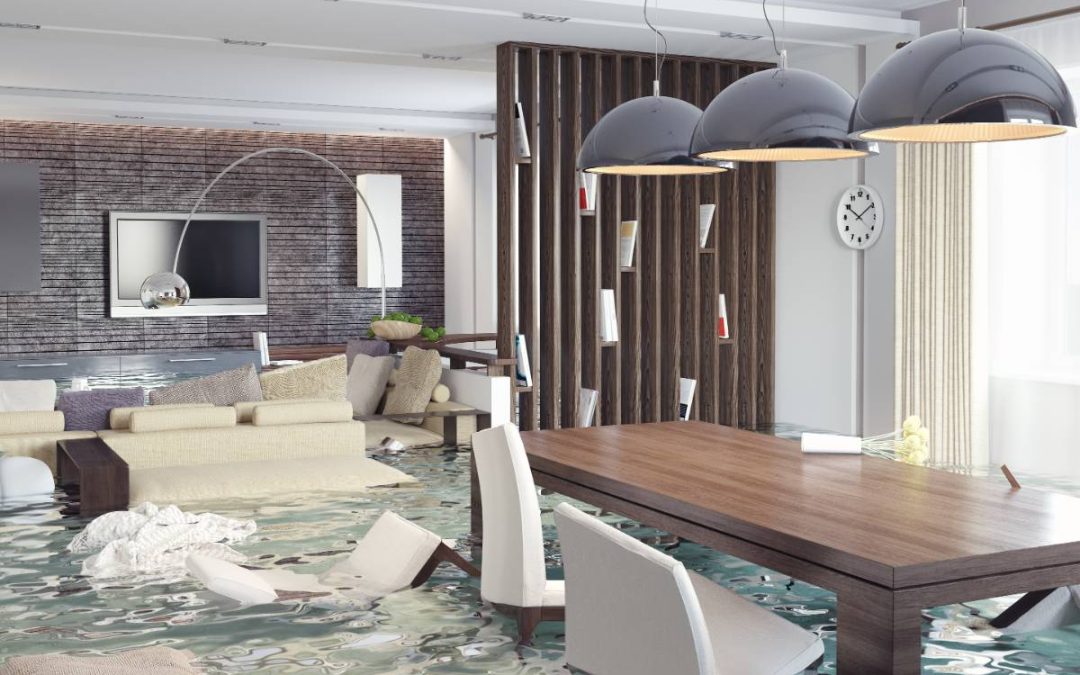For many Houstonians, spring and summer bring concerns about the possibility of flooding. Spring rains can be torrential and lead into hurricane season – disaster preparedness is the name of the game! Many homeowners will include door barriers and super absorbent towels in their hurricane kits. Wet vacs, dehumidifiers and fans are also a valuable part of an arsenal in the fight against water damage. Detering water from entering your home is ideal, but not always possible. Getting wet surfaces dry quickly is crucial.
Once the storm passes and all water recedes, it is time to assess the damage. If you are able to dry your floors and you see no obvious sign of damage you will likely wonder: “Is it safe to leave flooring down after a flood?”
Of all the surfaces in your home, flooring is among the very first that floodwaters will contact. Water will spread out, seeping into porous surfaces and finding its way through any cracks and crevices. If flooding is significant enough to cover the floors throughout your home, or if the water takes a day or more to recede, you can all but guarantee that your floors will need to be replaced. But if the water damage was only to a small area and you were able to address it quickly, how can you know whether your efforts were sufficient? Sometimes damage is obvious, as floors may show staining, buckling or peeling. Even if things look ok on the surface, however, it can be hard to know for certain what the status is below. Moisture trapped under your floors can lead to problems down the road – especially because it creates the perfect environment for the growth of toxic mold.
The type of flooring, and sub flooring, you have in your home will increase or decrease the likelihood that your floors will have safely weathered the storm.
Tile – Tile flooring is one of the most resistant to water damage. It is also typically installed over a concrete subfloor, which is much less susceptible compared to wood subfloor. If exposure is relatively brief and drying is quickly accomplished, there is a good chance that tile floors can be left down. However, water can and will seep through cracks or crevices – and if moisture remains under the tile, mold growth is likely over time.
Vinyl – Vinyl flooring is often labeled as water resistant. However, this resistance typically only applies to the top layer and will hold only to a point. Standing water will often seep through this top layer and saturate the vinyl tile. It will most likely need to be replaced.
Luxury Vinyl – Luxury vinyl tile is waterproof, but its seams are not. Any standing water is likely to seep through the seams and cause the adhesive to fail. This water will then be trapped underneath the flooring and mold growth is likely to develop.
Hardwood – Hardwood flooring is a substantial investment, and coming to terms with the need to replace it will be hard for any homeowner, but it is highly susceptible to water damage. Wood is a porous material that will soak up standing water quickly. Water will also seep between each plank to the flooring below. Quick action to dry things may prevent a total loss, as hardwood floors can be refinished in some cases rather than replaced. If the water was in a small area, it may be possible to replace only a section rather than all of your hardwood flooring. Concern remains for moisture in the subfloor below, which can lead to warping over time and the growth of mold.
Carpet – Carpet and carpet pads will act like a sponge when soaked with water. They will quickly transfer water from the surface to the subfloor below. Carpet should be pulled up quickly and the focus should be on drying out and preserving the subfloor.
After a flood, you want things to return to normal and to put the event behind you as fast as possible. It can be tempting to address the surface problems and hope for the best. But the last thing you want is to find yourself facing mold growth or flooring problems down the road – the inconvenience comes back around and the cost of repairs may be much higher than they would have been immediately following the event. Taking time to evaluate the situation and make the hard call to replace flooded floors may be in your best interest. The professionals at Floor Zone can help you move forward – whether a refinish, partial or total replacement is needed, we can help you restore things to a normal that lasts.

